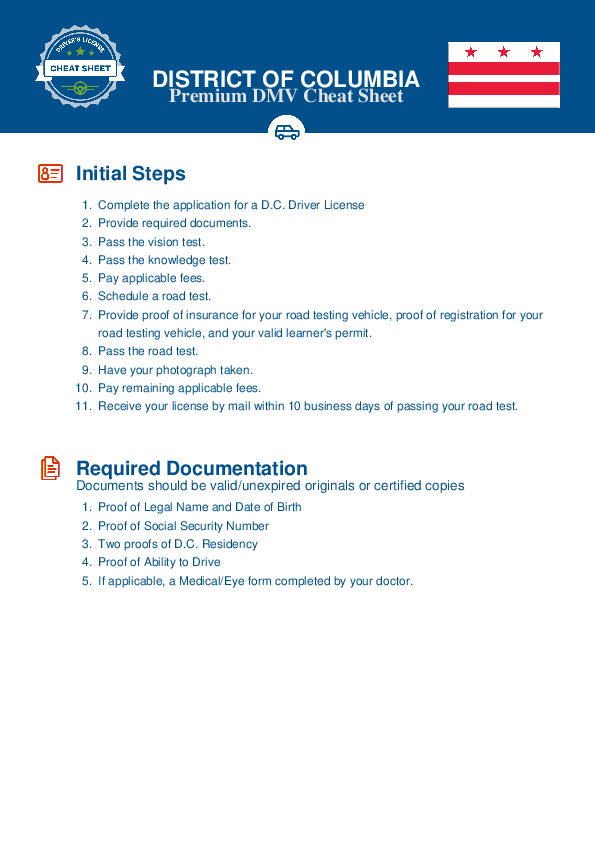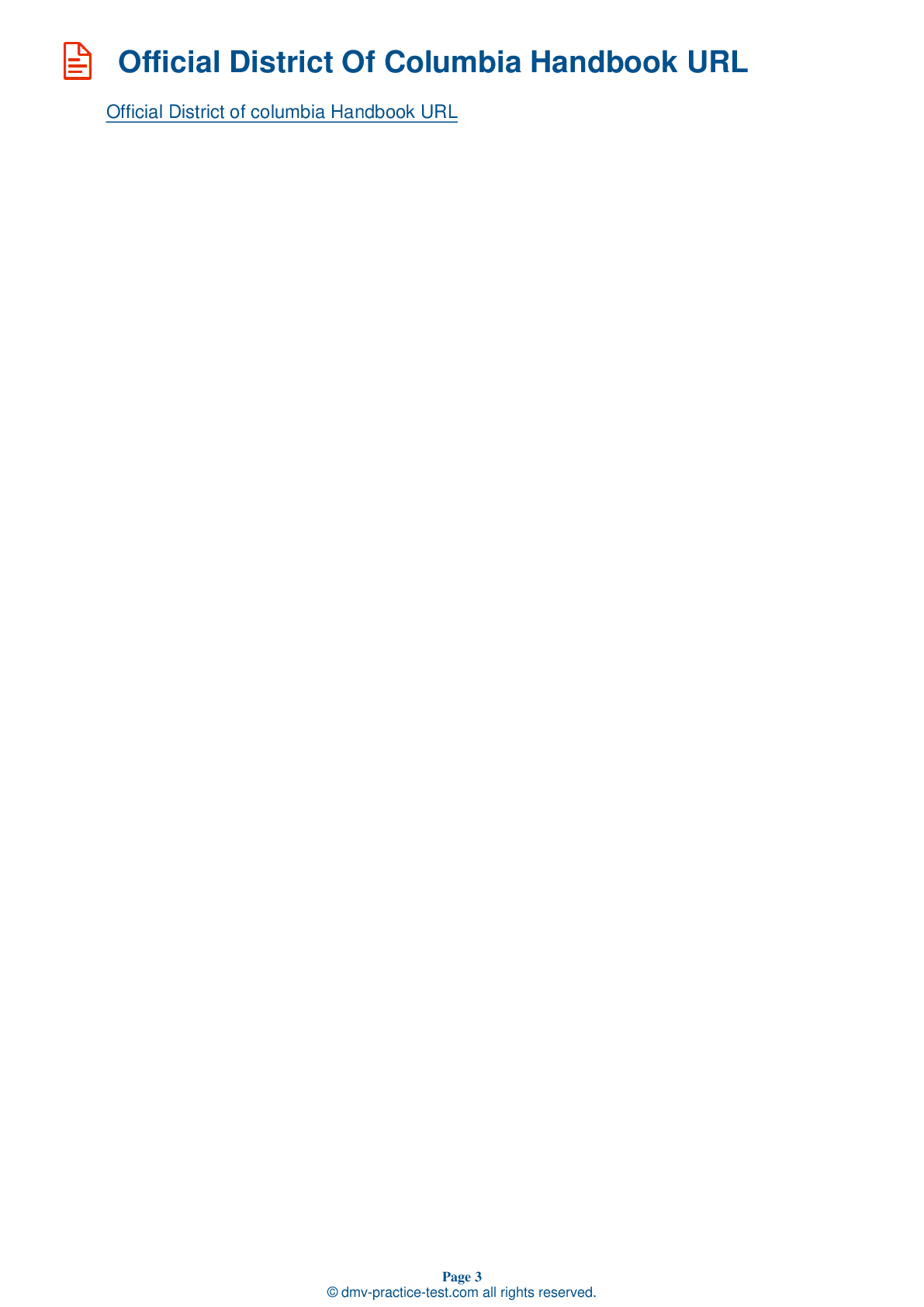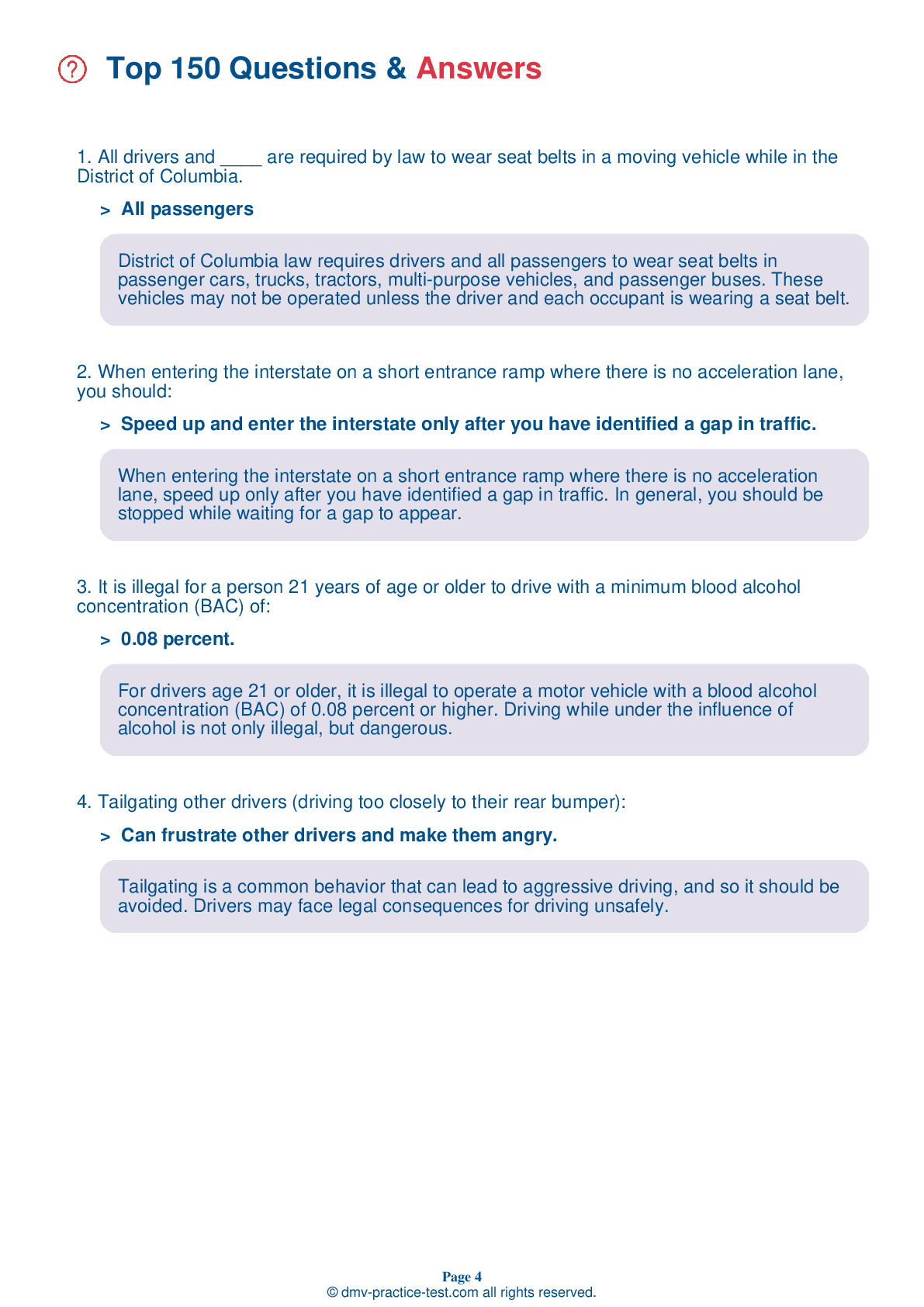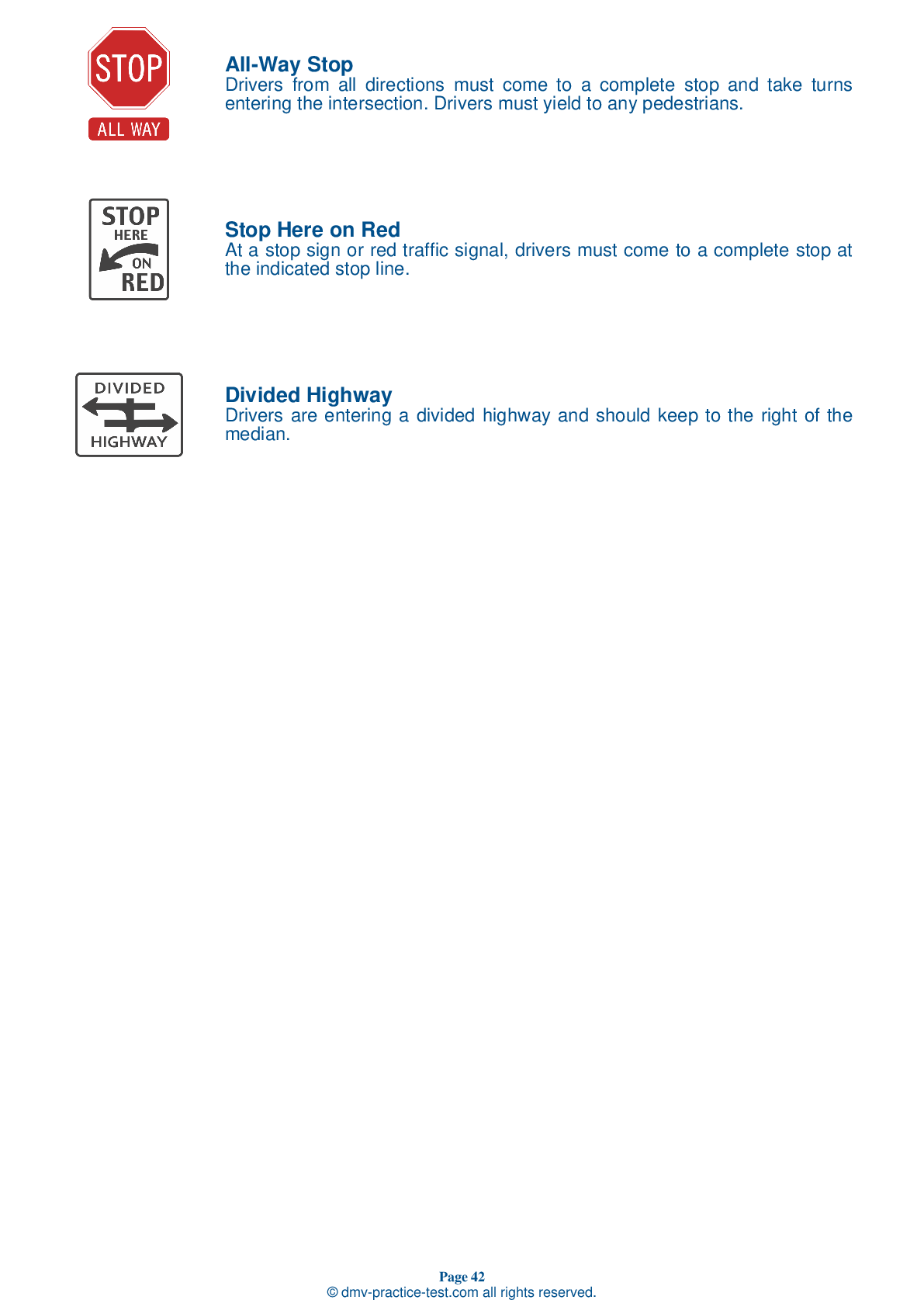FREE District Of Columbia DMV Practice Test #10 Page 3 of 3
This set of District Of Columbia DMV practise tests was been updated for January 2025. It includes questions based on the District Of Columbia Driver Handbook's most significant traffic signs and laws for 2025. Use actual questions that are very similar (often identical!) to the DMV driving permit test and driver's licence exam to study for the DMV driving permit test and driver's licence exam.
On the practise exam, each question gets a tip and explanation to help you remember the concepts. The written component of the official DMV test will include questions about traffic rules, traffic signs, and driving statutes, as well as information from the Driver Handbook.
To achieve the required passing grade, you must correctly answer 20 of the 25 questions. Take our DMV practise exam to help you prepare for your District Of Columbia instruction permit or driver's licence.
The DMV exam is available in several languages.
Using any form of testing help will result in an automatic fail, and the DMV may take further action against your driver's licence, so avoid it.
17 . If an oncoming driver is heading toward you in your lane, you should:
If another vehicle is approaching you head-on in your lane, you should first honk your horn to attract attention. If the other driver does not move over, try to escape to the right. If you swerve left and the other driver corrects at the last instant, you will still crash. If a collision is unavoidable, brake firmly and steadily. Every mile per hour you slow down will reduce the impact.
18 . This road sign means:
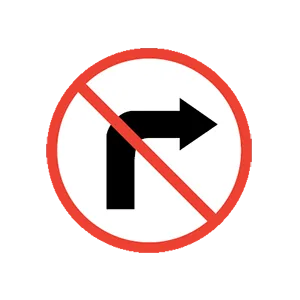
Regulatory signs display laws that drivers must always obey. Right turns are not permitted where this sign is present.
19 . A driver should:
A driver should watch beside, ahead, and to the rear of their car. To be a good driver, you must know what is happening all around your vehicle.
20 . This sign means:
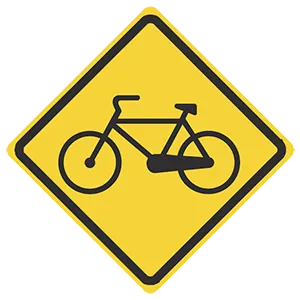
Warning signs are usually yellow with black markings. Warning signs may alert drivers to areas where animals, people, and vehicles are likely to cross traffic.
21 . If you want to pass a pedestrian who is walking along the roadway and an oncoming vehicle is approaching, you should:
If possible, try to only deal with one roadway hazard at a time. If you want to pass a pedestrian but an oncoming vehicle is approaching, slow down and let the vehicle pass. You may then pass the pedestrian if it is safe to do so.
22 . To avoid being blinded by the glare of oncoming headlights:
Glancing back and forth between the right side of the road and the road directly ahead allows you to avoid the glare of oncoming headlights while still staying safely in your lane.
23 . To check your blind spot when changing lanes to the left, you should glance:
To check your blind spot, glance over your shoulder in the direction that you want to move.
24 . An intersection has no traffic signs or signals. You arrive at the same time as a vehicle to your right. You should:
When two vehicles arrive to an uncontrolled intersection at the same time, the vehicle on the right has the right-of-way. Once the vehicle on the right has safely passed through the intersection, the other driver may proceed.
25 . If there are two railroad tracks next to each other:
If there are two railroad tracks next to each other, watch for a second approaching train after one train passes. Do not begin to cross the tracks until you’re sure no train is approaching from either direction on either track.
See the exact questions that will be on the 2025 District Of Columbia DMV exam.
99.2% of people who use the cheat sheet pass the FIRST TIME
LT gives us an insight on how the cheat sheet provided her with all the study questions she needed before taking her test.
Joe initially studied with the handbook and failed his test, he eventually found us online, studied and pass his test the first time around.
